The Land Between: A Land of Lakes

The Land Between is home to a substantial portion of Ontario’s freshwater outside of the Great Lakes. Spanning Ontario's Cottage Country, including the Muskokas, Kawarthas, and all the way east to the Ottawa Valley, this land is a headwaters that provides drinking water supplies and recharges aquifers for much of southern Ontario. Due to this, this region has a large role to play in ensuring that our water and associated wildlife remains healthy for generations to come.
You can learn about how important the water in this area is from the numbers below!
The Land Between is home to 30,000 lakes with over 2,700 being considered “large” in size.
The Land Between is home to the last reserve of wetlands in Southern Ontario, with over 84% being “beaver controlled”, which are generally seen as the most biodiverse and thriving wetlands in our area.
In The Land Between, you can turn in any direction and find water within half a kilometer!
Fisheries in The Land Between are valued at over $110 million annually!
An estimated 70% of the economic income for businesses and municipalities relies on outdoor recreation and cottaging, both of which are highly dependent on the health of our lakes.
An estimated 70% of shoreland is located in The Land Between!
Because of the significant role this area plays in lake health and integrity, it is vital that we do our part to ensure that our watershed and its components remain healthy and intact.
Our Watershed
A watershed is an area of land that catches and moves rain and snow through soils, rivers, creeks, and wetlands into a larger receiving body of water; typically a large lake. Within a watershed, everything is connected from the smallest of streams to the largest of lakes!
Watersheds can be broken into 4 main levels:
Primary Watershed
The primary watershed is the highest scale of watershed we have!
In The Land Between, we are part of the Great Lakes - St. Lawrence River primary watershed!
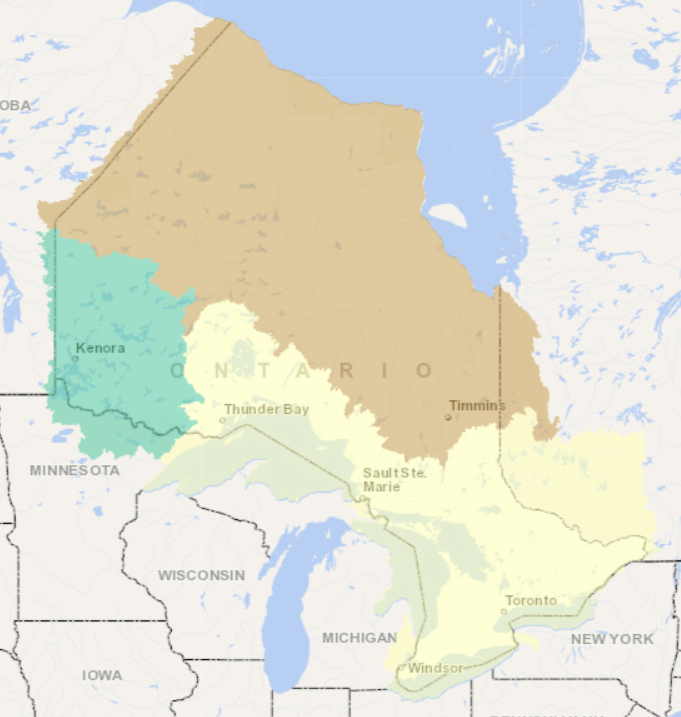
Secondary Watershed
The secondary watershed is a subdivision of the primary watershed and are usually large river systems or groupings of small coastal streams. They range in size of just under 4,000 km² to 150,000 km².
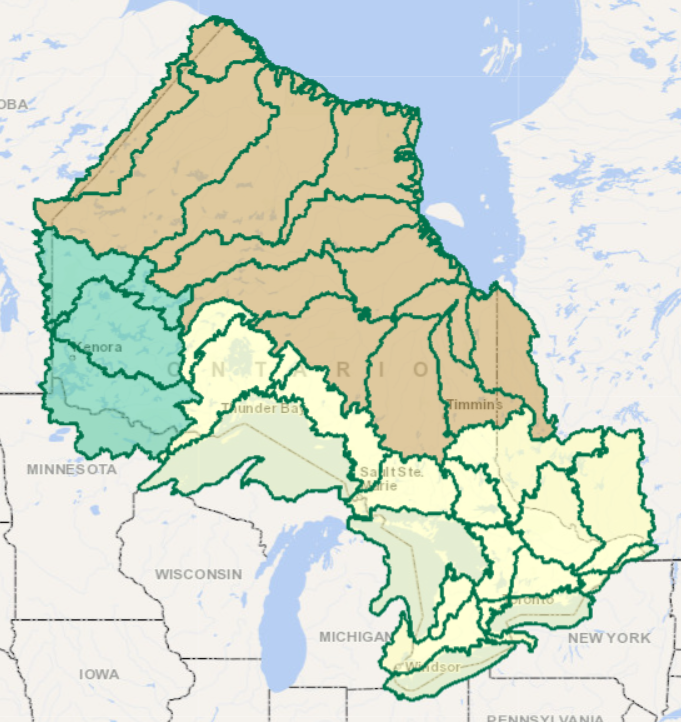
Tertiary Watershed
The tertiary watershed is a subdivision of the secondary watershed and can range in size between 700 km² to 31,000 km².
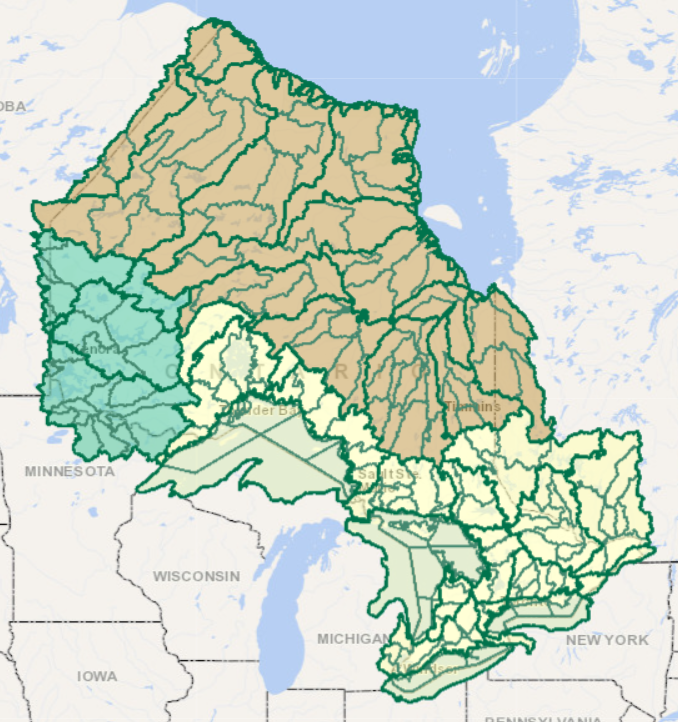
Quaternary Watershed
The quatenary watershed is the smallest subdivision of watershed we have.
There are over 1000 different quatenary watershed divisions across Ontario!
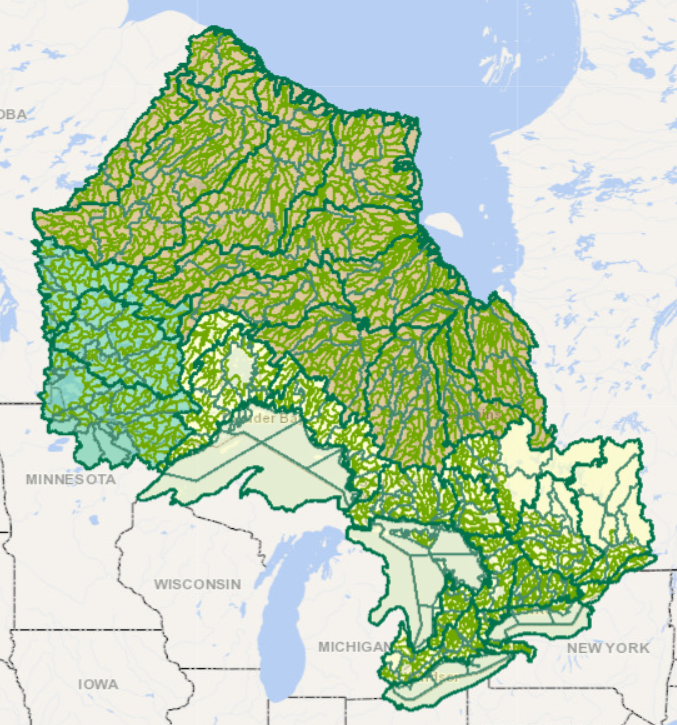
It's important to remember that everything within a watershed is connected to one another. This means that what we do on the land has the potential to directly impact the water. It is vital that we all take an active role in protecting the lakes we love!
Services & Economics of Lakes!
Ecosystem Services
Lakes provide many services (completely free of charge!) to us as humans! These services are called ecosystem services and they can include anything from the food we eat to the activities we enjoy. The estimated annual value of ecosystem services globally amounts to an astonishing $33 trillion!
Ecosystem services can be grouped into three broad categories:
Provisioning Services
Provisioning Ecosystem Services are things provided by nature that are directly used to address needs in humans.
For example:
- Providing food to eat
- Supplying water to drink
- Creating power via hydrodams

Regulating Services
Regulating Ecosystem Services are services that moderate natural phenomena in the lake. These services can be provided by different parts of the lake.
For example:
- Sequestering carbon
- Flood and erosion control by the shoreland
- Water purification
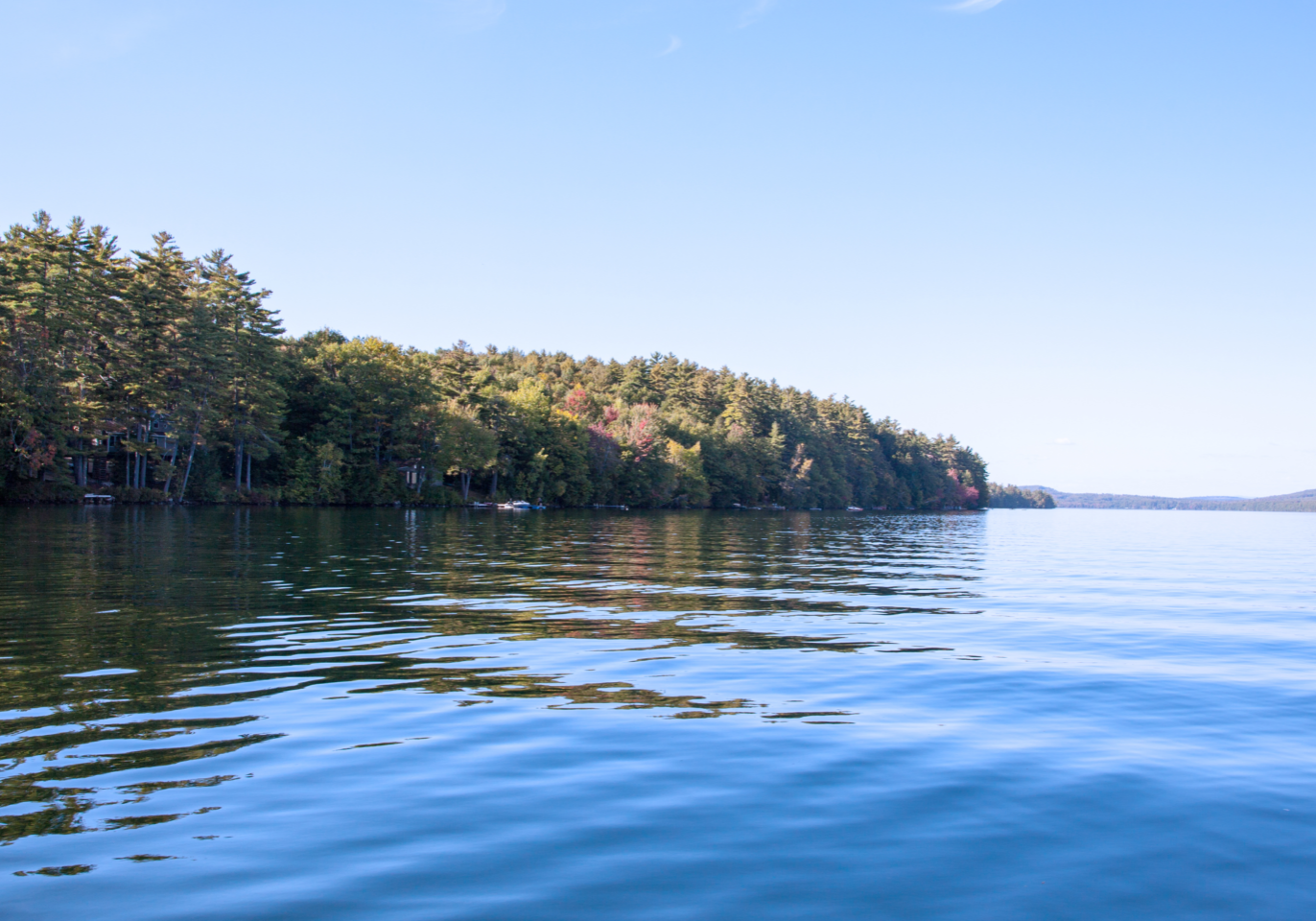
Cultural Services
Cultural Ecosystem Services are things provided by nature that are used by humans to meet cultural, spiritual, and wellbeing-related needs of humans.
For example:
- Facilitate recreational activities like boating, fishing, and swimming
- Provide beautiful views and landscapes
- Are spiritual bodies held in high regard by many cultures
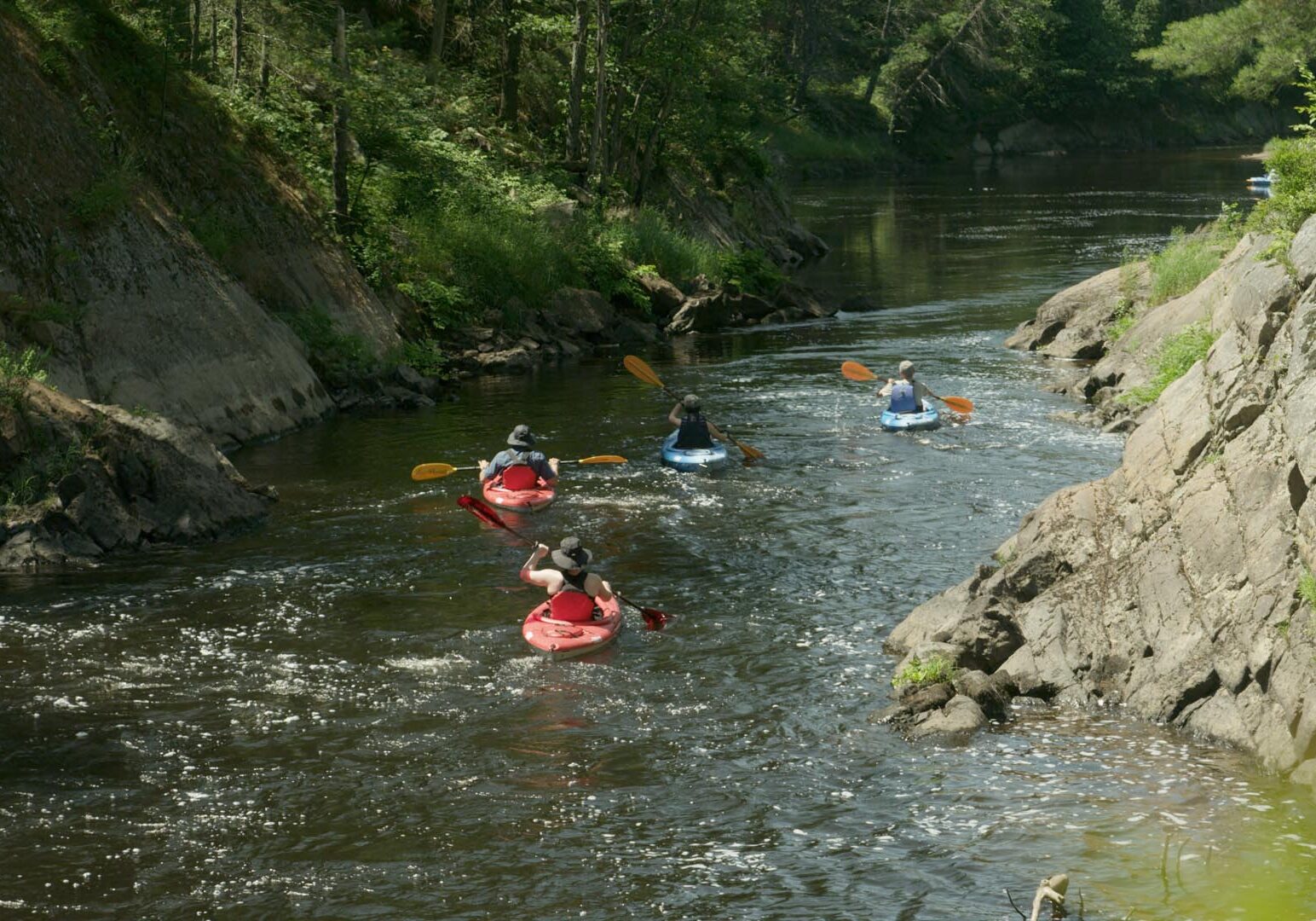
Case Studies!
In addition to the many services lakes provide to us for free, there are also many direct economic benefits they provide! From commercial fisheries, tourism, and facilitating trades, lakes play an important role in several of our economic pillars.
Many things can also directly influence lakefront property values, both positively and negatively. Several studies have been conducted showing that the health and wellbeing of our lakes can directly influence the values of our properties! Click through the studies listed below to learn more.


